Below is my code. I am tried to add one line (data from a different csv file) on top of a stacked barplot however it wont work, the error says "object variable not found". Without added the geom_line the stacked barplot works so I assume it is the line that is creating the issue. Any ideas on how I fix this?
a <- read.csv("data.csv", header=TRUE, sep=",")
line1 <- read.csv("data1.csv", header=TRUE, sep=",")
line2 <- data.frame(line1)
library(reshape2)
c <- melt(a, id.var="day")
library(ggplot2)
a <- ggplot(c, aes(x=day, y=value, fill=variable)) +
geom_bar(stat="identity", aes(x=day, y=value), width=0.7) +
geom_line(data=line2, aes(x=day, y=value), color="black", stat="identity")
+
scale_fill_manual(values = c("black", "grey47", "grey")) +
scale_x_continuous(breaks = round(seq(min(m$day), max(m$day), by = 1),0))
print(a)
